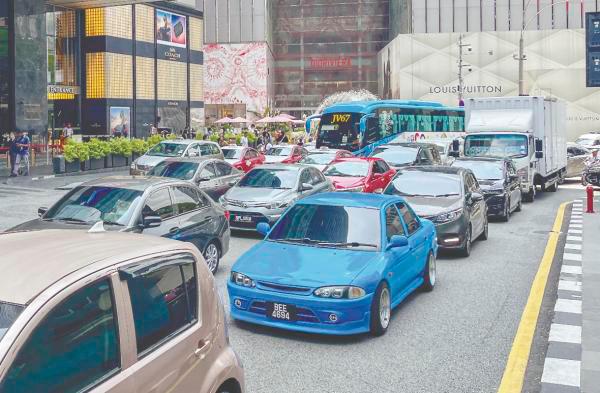PETALING JAYA: A road safety expert has called for surcharges to be levied on motorists in single or low-occupancy vehicles entering Kuala Lumpur city to address growing traffic congestion and reduce the burden on Klang Valley motorists.
Universiti Putra Malaysia Road Safety Research Centre head Assoc Prof Dr Law Teik Hwa said some six million vehicles enter Kuala Lumpur daily and at least 2.2 million do so during peak hours.
He said the statistics were compiled in a study carried out in April and conducted using the Automatic Real-time Incident Detection System (Arids), which is powered by artificial intelligence that uses social media apps and Google traffic data to detect incidents that impact traffic speed, such as road crashes and vehicle breakdowns.
“Among the busiest roads are Jalan Sungai Besi, Jalan Kuching, Jalan Sultan Azlan Shah, Jalan Klang Lama, Jalan Kuchai Lama, Jalan Cheras, Jalan Tarawih, Jalan Damansara and the Duke, Salak and KL-Seremban highways.
“Based on Kuala Lumpur City Hall findings, motorists in the Klang Valley spend about RM6.8 billion annually on petrol while stuck in traffic during their daily commute to and from work. Efforts should be made to reduce this burden.”
Law said statistics show public transport vehicles are involved in fewer accidents per passenger mile compared with private cars and contribute to safer streets by reducing the number of vehicles on the road and promoting pedestrian friendly spaces.
He said Malaysians should be encouraged to use public transport more often, adding that improved public transport services could revolutionise traffic flow and enhance efficiency and effectiveness.
However, since this is not in effect, other methods to control vehicle numbers should be enforced.
He suggested several ways to impose the surcharge, such as Variable Charging Based on Occupancy, which varies based on the number of passengers in vehicles.
“Higher charges apply to vehicles with fewer passengers, with rates decreasing as vehicle occupancy increases. This would encourage carpooling and reduce single-occupancy vehicle trips.”
Time of Day Pricing levies higher charges during peak hours when congestion is typically worse. This would help manage traffic flow more efficiently throughout the day.
Law also suggested Integration with Public Transport, which offers incentives or exemptions for vehicles that integrate with public transport networks, such as park-and-ride facilities or preferential access to designated lanes for buses and carpools.
Finally, Dynamic Adjustment is a system that adjusts charges based on real-time traffic conditions and congestion levels, ensuring the policy remains responsive and effective in managing traffic flow.
“Authorities could implement the methods after a study to ascertain which would be most effective. Considering the majority of Malaysians rely on private vehicles and nearly 90% of daily road users commute alone, discouraging private vehicle usage would contribute to better traffic conditions.”
He said Arids data revealed commuters spend 352 minutes a day stuck in congestion in Jalan Sungai Besi, 288 minutes in Jalan Kuching, 224 minutes in Jalan Klang Lama and 234 minutes in Jalan Sultan Azlan Shah.
He added that traffic management issues are among the main reasons for congestion, such as inefficient traffic light systems and timing, poor traffic flow management and a lack of synchronised traffic signals.









